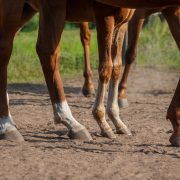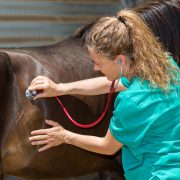Reducing antibiotic usage
6.a. Reducing antibiotic usage
Published 29 April 2021 | Updated 23 January 2024
Reducing antibiotic usage involves not only making decisions about the need for antibiotic use but also reducing the need for antibiotics through measures to keep animals healthy. This is an area where we may be able to learn from experiences in other countries.
- Guenin, M-J, Studnitz, M. and Molia, S. (2023) Interventions to change antimicrobial use in livestock: a scoping review and an impact pathway analysis of what works, how, for whom and why. Preventive Veterinary Medicine, 220, no. 106025. https://doi.org/10.1016/j.prevetmed.2023.106025
- More, S.J. (2020) European perspectives on efforts to reduce antimicrobial usage in food animal production. Irish Veterinary Journal, 73, no. 2. https://doi.org/10.1186/s13620-019-0154-4
- Skjølstrup, N.K. et al (2020) Veterinary herd health consultancy and antimicrobial use in dairy herds. Frontiers in Veterinary Science, 7, no. 1191. https://doi.org/10.3389/fvets.2020.547975
- Gerber, M., Dürr, S. and Bodmer, M. (2021) Reducing antimicrobial use by implementing evidence-based, management-related prevention strategies in dairy cows in Switzerland. Frontiers in Veterinary Science, 7, no. 1195. https://doi.org/10.3389/fvets.2020.611682
- Raasch, S. et al (2020) Effectiveness of alternative measures to reduce antimicrobial usage in pig production in four European countries. Porcine Health Management, 6, no. 6. https://doi.org/10.1186/s40813-020-0145-6
- Speksnijder, DC. Et al (2015) Reduction of veterinary antimicrobial use in the Netherlands. The Dutch success model. Zoonoses and Public Health, 62 (s1), pp.79-87. https://doi.org/10.1111/zph.12167
- Speksnijder, D.C. and Wagenaar, J.A. (2018) Reducing antimicrobial use in farm animals: how to support behavioral change of veterinarians and farmers. Animal Frontiers, 8 (2), pp. 4-9. https://doi.org/10.1093/af/vfy006
- Reyher, K.K., Barrett, D.C. and Tisdall, D.A. (2017) Achieving responsible antimicrobial use: communicating with farmers. In Practice, 39 (2), pp. 63-71. https://doi.org/10.1136/inp.j341
- Hyde, R. et al (2019) Reducing antimicrobial use on dairy farms using a herd health approach. In Practice, 41 (8), pp. 368-382. https://doi.org/10.1136/inp.l5518
- Rafferty, R. et al (2019) A pilot study of the in vitro antimicrobial activity and in vivo residual activity of chlorhexidine and acetic acid/boric acid impregnated cleansing wipes. BMC Veterinary Research, 15, no.382. https://doi.org/10.1186/s12917-019-2098-z
- Björkman, I. et al (2019) The Swedish example of food animal production without extensive use of antibiotics–or “healthy animals do not need antibiotics”. bioRxiv, https://doi.org/10.1101/809079
- Singleton, D.A. et al (2021) A randomised controlled trial to reduce highest priority critically important antimicrobial prescription in companion animals. Nature Communications, 12, no. 1593 https://doi.org/10.1038/s41467-021-21864-3
- Lagana, D.M., Taylor, D.D. and Scallan Walter, E.J. (2023) Advancing antimicrobial stewardship in companion animal veterinary medicine: a qualitative study on perceptions and solutions to a One Health problem. Journal of the American Veterinary Medical Association, 261 (8), pp. 1200-1207. https://doi.org/10.2460/javma.23.02.0100





Leave a Reply
Want to join the discussion?Feel free to contribute!